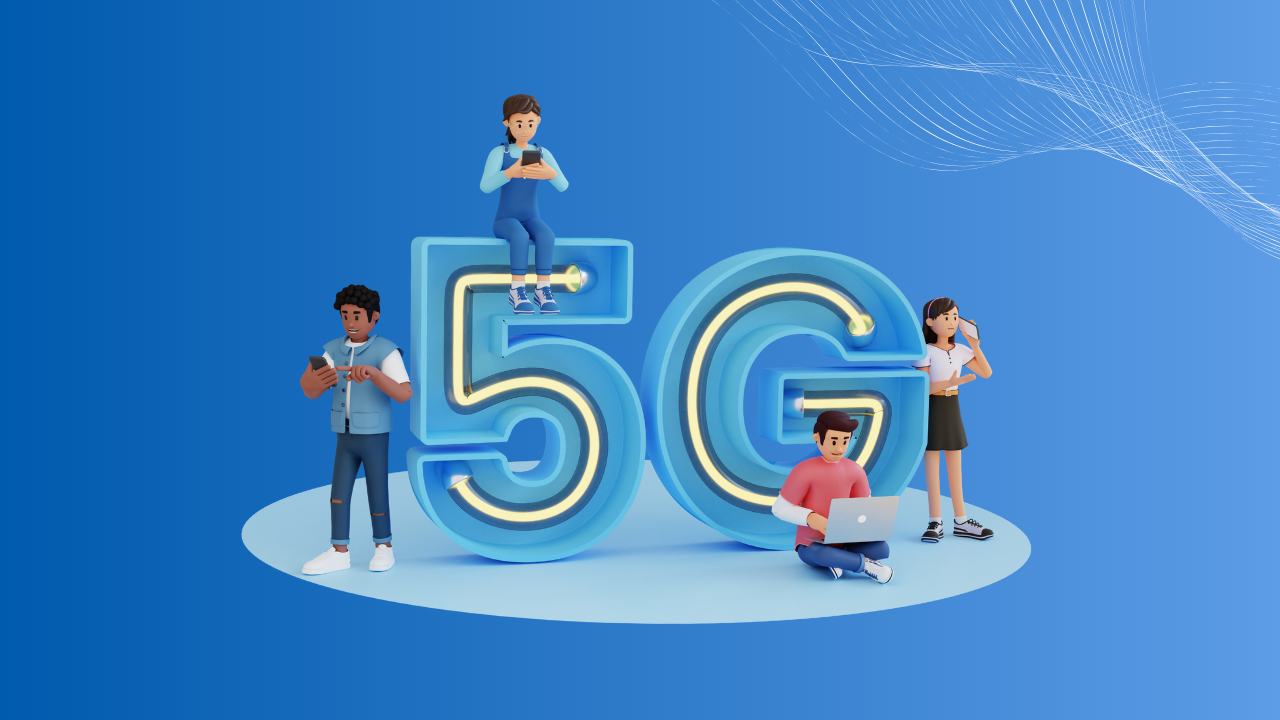Towven.com – In today’s fast-paced world, staying connected is more important than ever. From streaming videos to conducting business meetings, our reliance on technology continues to grow.
Enter 5G technology the next generation of wireless connectivity that promises lightning-fast speeds and unparalleled reliability.
But what exactly is 5G, and how will it impact our lives? Let’s dive into the world of 5G and uncover its potential.
Understanding 5G Technology
To grasp the significance of 5G, it’s essential to understand its roots.
5G, or fifth-generation wireless technology, represents a monumental leap forward in connectivity. Unlike its predecessors, such as 4G and 3G, 5G offers unparalleled speed, low latency, and massive capacity.
Think of it as upgrading from a narrow country road to a superhighway, enabling a vast amount of data to travel seamlessly and efficiently.
Here’s a breakdown of key aspects of 5G technology:
- Higher Data Rates: 5G promises significantly faster data rates compared to its predecessors, potentially reaching up to 10 gigabits per second (Gbps). This ultra-fast speed enables smoother streaming of high-definition videos, faster downloads, and quicker response times for applications.
- Lower Latency: One of the most notable improvements with 5G is its reduced latency, or the time it takes for data to travel between devices. 5G aims to achieve latencies as low as one millisecond (ms), enabling near real-time communication. This low latency is crucial for applications like autonomous vehicles, remote surgery, and augmented reality (AR)/virtual reality (VR) experiences.
- Increased Capacity: With the proliferation of connected devices and the growing demand for data-intensive applications, 5G networks are designed to support a massive number of simultaneous connections. This increased capacity ensures that networks can handle the surge in data traffic without experiencing congestion or slowdowns.
- Enhanced Spectrum: 5G utilizes a wider range of frequencies, including low-band, mid-band, and high-band (mmWave) spectrum. Low-band frequencies provide broader coverage, while high-band frequencies offer faster speeds but shorter range. Mid-band frequencies strike a balance between coverage and speed. By leveraging these diverse spectrum bands, 5G networks can deliver optimal performance across various use cases and environments.
- Network Slicing: 5G introduces the concept of network slicing, allowing operators to partition their network infrastructure into virtual slices tailored to specific applications or user groups. Each slice can be optimized with different performance characteristics, such as bandwidth, latency, and security, to meet the unique requirements of various services.
- Massive MIMO and Beamforming: Multiple Input Multiple Output (MIMO) technology, coupled with beamforming techniques, is a fundamental feature of 5G networks. Massive MIMO involves deploying a large number of antennas at base stations to transmit and receive multiple data streams simultaneously, thereby increasing spectral efficiency and enhancing network capacity. Beamforming concentrates the radio signal into focused beams, improving coverage and reliability, especially in dense urban areas.
- IoT and Industry 4.0 Enablement: 5G is expected to drive the proliferation of the Internet of Things (IoT) and enable the realization of Industry 4.0 initiatives. Its high-speed, low-latency connectivity can support a myriad of IoT devices and applications, facilitating smart cities, autonomous machinery, remote monitoring, and other transformative technologies.
Overall, 5G technology represents a paradigm shift in wireless communication, unlocking new possibilities for connectivity, innovation, and economic growth across various industries and sectors.
Evolution of Wireless Connectivity
Wireless connectivity has come a long way since the days of dial-up internet. Each generation, from 1G to 5G, has brought significant improvements in speed and reliability.
While 1G allowed for basic voice calls, 2G introduced text messaging. 3G brought us mobile internet, while 4G revolutionized it with faster speeds, paving the way for video streaming and online gaming.
Now, 5G is poised to take us even further into the future, enabling technologies like augmented reality and autonomous vehicles.
How Does 5G Work?
At its core, 5G relies on a combination of advanced technologies to deliver its impressive performance.
Unlike previous generations that primarily used microwaves, 5G utilizes millimeter waves, which operate at much higher frequencies.
These waves can carry more data but have shorter ranges, requiring the deployment of small cells in densely populated areas.
Additionally, beamforming and massive MIMO (Multiple Input Multiple Output) techniques help focus the signal directly to the user, reducing interference and improving efficiency.
Advantages of 5G
The benefits of 5G technology are far reaching and diverse.
With speeds up to 100 times faster than 4G, users can download movies in seconds, stream 4K videos without buffering, and enjoy lag-free gaming experiences.
Moreover, the low latency of 5G enables real-time interactions, making it ideal for applications like remote surgery and autonomous vehicles.
Additionally, the increased network capacity ensures a seamless experience, even in crowded areas.
Applications of 5G Technology
The potential applications of 5G technology are virtually limitless.
From smart cities and Internet of Things (IoT) devices to telemedicine and virtual reality, 5G will empower a new wave of innovation.
Imagine traffic lights that communicate with cars to optimize traffic flow, or wearable devices that monitor your health in real-time. With 5G, the possibilities are endless.
Impacts on Various Industries
The introduction of 5G technology will have a profound impact on various industries. In manufacturing, automation powered by 5G will increase efficiency and productivity.
Healthcare will see advancements in telehealth and remote patient monitoring, improving access to care.
Education will become more immersive and interactive, with virtual classrooms and augmented reality learning experiences.
Addressing Concerns and Challenges
Despite its immense potential, 5G technology also raises concerns regarding privacy, security, and health.
Some worry about the potential health effects of prolonged exposure to radiofrequency radiation, while others fear cyberattacks on interconnected devices.
It’s essential to address these concerns through regulatory measures and ongoing research to ensure the safe and responsible deployment of 5G.
The Future of Connectivity
As we look ahead, it’s clear that 5G is just the beginning. 6G technology is already on the horizon, promising even faster speeds and more advanced capabilities.
Beyond that, satellite internet and quantum communication hold the potential to further revolutionize connectivity.
With each advancement, we inch closer to a truly connected world, where distance is no longer a barrier to communication.
Conclusion
In conclusion, 5G technology represents a monumental leap forward in connectivity, promising faster speeds, lower latency, and increased capacity.
From streaming high-definition videos to powering autonomous vehicles, the potential applications of 5G are vast and diverse.
While challenges and concerns remain, the future of connectivity has never looked brighter. As we embrace the power of 5G, we embark on a journey towards a more connected and innovative world.
FAQs about 5G
Q1: What makes 5G different from previous generations? A1: 5G offers significantly faster speeds, lower latency, and increased network capacity compared to 4G and other predecessors.
Q2: Will 5G replace Wi-Fi? A2: While 5G may complement Wi-Fi in certain scenarios, it’s unlikely to replace it entirely. Wi-Fi will continue to play a vital role in local connectivity.
Q3: Are there any health risks associated with 5G? A3: While some concerns have been raised about potential health effects, extensive research is ongoing to ensure the safety of 5G technology.
Q4: When will 5G be available everywhere? A4: The rollout of 5G varies by region, but efforts are underway to expand coverage globally over the coming years.
Q5: How will 5G impact everyday life? A5: 5G technology will enable faster internet speeds, real-time communication, and innovative applications across various industries, enhancing everyday experiences.







